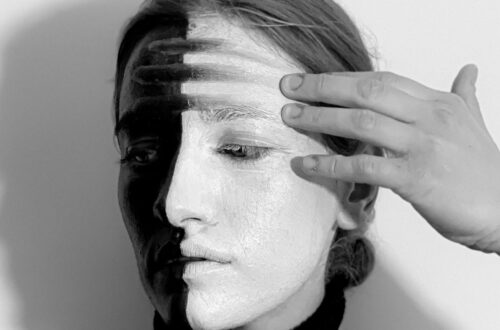
Autism, Food, and Eating Disorders
FOOD. Most Autistics have lifelong struggles, myself included.
Here are some interesting stats:
· Up to 35% of Adult Anorexics are Autistic.
· Up to 70% of Autistic Children have Avoidant Restrictive Food Intake Disorder.
Why? What’s the problem?
The first one on our list is SENSORY PROCESSING ISSUES. This is a prevailing trait among Autistics.

We have extra synapse connections in our brain, which leads to a sensory assault much of the time. Certain flavors, textures, smells, and sounds are unbearable. It’s typical among Autistics to eat the same foods day in and day out because of this.
It’s not necessarily a problem in and of itself, but nutritional deficiencies are definitely a risk.
I personally have tons of issues in this area. Adding to all that is my problem of Misophonia; I could literally run screaming from eating sounds.
Another common trait is INTEROCEPTION CONFUSION. This is when we fail to receive certain cues from our body (such as hunger). We can literally FORGET to eat, because we don’t FEEL HUNGRY.
Autistics tend to get into a state of hyperfocus when working on something. Combine that with a lack of a hunger cue… who knows how long it can take before one realizes they need to eat.

It’s not uncommon for an Autistic to set food alarms so they are alerted to the fact that it’s time.
Lurking behind the scenes is GASTROINTESTINAL ISSUES. If we are dealing with something in this area, we’re just not going to want to eat. The fear of the effects of eating is truly a problem as well; up to 50% of children with ARFID have a fear of bad outcome from eating, such as choking or vomiting.
What about SOCIAL ASPECTS? Eating is often done with others. When a person is experiencing social anxiety, autistic burnout, or non-verbal episodes, sitting down and eating with a group of people is out of the question.

Then we have the dreaded RESTAURANT. They are a whole other story with the sensory overload and overwhelming unfamiliarity.
ANOREXIA. Adults with this condition are as many as 35% Autistic.
With the Autistic, it’s less about body image and more about masking anxiety and emotions.
Alexithymia, a trait of Autism, exacerbates the problem when present. Alexithymia is a difficulty with knowing one’s own emotions. It makes processing situations and relationships really hard!
So… what if it IS about body image?
What starts out as a healthy desire to lose a bit of weight and get in shape can take a turn when the typical Autistic traits of hyperfixation and an all-or-nothing approach come into play.

Calorie counting and exercise then become obsessive… and excessive.
What is ARFID? Avoidant Restrictive Food Intake Disorder affects up to 70% of Autistic children. This is a fairly new DSM category and is more common in children and adolescents than adults.
This comes from: extreme sensory sensitivities, fear of a bad outcome from eating, and a lack of interest.

When we have an Autistic child that is hyperfocused on something, that has trouble with transitions, and has no hunger cue…. Getting them to stop to eat is a recipe for a meltdown.
WHAT ABOUT TREATMENT?
Standard treatment plans do not accommodate Autistics. They tend to focus heavily on BODY IMAGE, involve GROUP THERAPY, and MEDICAL CLINICS.
As previously stated, it’s not typically about Body Image for the Autistic. Group therapy is not going to be helpful for the Autistic that struggles with social interactions. Medical clinics bring in all sorts of sensory stimuli, with the bright lights, smells, sounds, and chaos.
Place an Autistic that has simply been trying to mask emotions and anxiety, doesn’t even understand it themselves, into a medical clinic, with group therapy, that discusses body image….. this is going to cause more HARM than good.
When it comes to treatment, it’s important to treat the Autistic. To look at the cause behind the behavior, as well as the potential nutritional deficiencies. NOT to try to place and Autistic into a Neurotypical box.

A FEW RESOURCES
Website: https://www.peacepathway.org
Book: Supporting Autistic People with Eating Disorders by Kate Tchanturia
App: Trainwell (formerly Copilot) – helps support healthy habits with eating and exercising
I personally have struggled with food and eating disorders my whole life. I am fortunate, to have found out about my Neurodivergent brain…. As that certainly helps open the door to understanding, accommodating, and getting proper supports on this journey.
RK


